Picture this: no more climbing shaky ladders to scoop out slimy leaves from your gutters. Sounds like a dream, right? That’s exactly why I’m sold on LeafFilter gutter protection.
After years of battling clogged gutters and the mess they bring, I found a solution that actually works. LeafFilter’s micromesh system keeps debris out while letting water flow freely, saving you time, hassle, and costly repairs.
In this article, I’ll share my firsthand experience, break down the pros and cons, offer maintenance tips, compare it to other brands, and answer your burning questions. Trust me, your home deserves this.
My Journey With LeafFilter
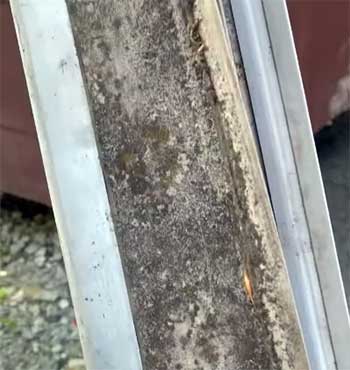
A few years back, I moved into a cozy house surrounded by towering oaks.
It was picturesque until autumn hit, and my gutters turned into a leafy swamp.
Cleaning them was a nightmare—wobbling on a ladder, scooping out gunk, and praying I wouldn’t slip.
I knew I needed a better solution, so I started researching gutter guards.
LeafFilter caught my eye with its bold promise: no more gutter cleaning, ever. Skeptical but desperate, I scheduled a consultation.
The process was smoother than I expected. A LeafFilter rep came to my home, measured my gutters, and explained how their stainless steel micromesh works. The 275-micron holes are tiny enough to block leaves, pine needles, and even shingle grit, but let water pass through.
Installation took just a few hours, and the crew was professional, cleaning up every scrap before they left. I was impressed by their attention to detail—they even realigned my sagging gutters.
The first big rain came a week later, and I held my breath. Would it really work? I grabbed my umbrella and went outside to check. Water flowed smoothly through the downspouts, and not a single leaf was stuck on the guards.
Over the next few months, I noticed something else: no more overflow staining my siding, no puddles near my foundation. Even during a brutal storm, the system held up. I’ve been using LeafFilter for two years now, and it’s been a game-changer.
Sure, it wasn’t cheap, but the peace of mind? Priceless. I’ll never go back to the ladder life.
What Makes LeafFilter Stand Out?
LeafFilter’s design is its secret sauce. The micromesh screen, made of surgical-grade stainless steel, sits over a durable uPVC frame, creating a sealed system that fits snugly over your existing gutters.
Unlike other guards with big holes or flimsy materials, LeafFilter’s 275-micron mesh blocks nearly everything—leaves, twigs, pine needles, even pollen. The built-in pitch ensures debris slides off, while water clings to the surface and flows into the gutter.
It’s like a force field for your gutters. Plus, the lifetime transferable warranty means you’re covered for as long as you own your home.
The Pros of LeafFilter: Why I Love It?
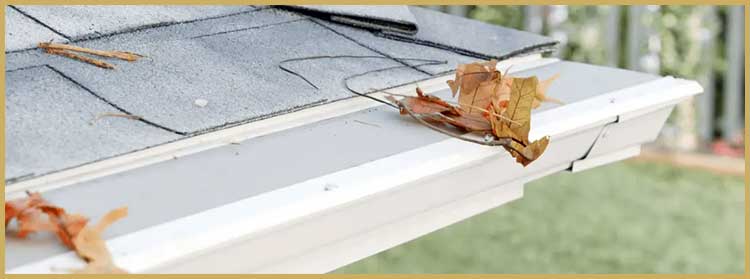
- Clog-Free Living
Let’s be real—nobody enjoys cleaning gutters. With LeafFilter, I haven’t touched a ladder in years. The micromesh screen is a beast at keeping out debris. Leaves, pine needles, and even those pesky maple helicopters slide right off.
During my first spring with LeafFilter, I watched pollen dust wash away in a light rain. The system’s design uses surface tension to channel water into the gutters while debris falls to the ground.
It’s not perfect—some tiny grit might sneak through—but it’s a far cry from the clogged messes I dealt with before.
- Durability That Lasts
LeafFilter’s materials are built to withstand the elements. The stainless steel mesh doesn’t rust or corrode, even after two harsh winters and scorching summers at my place. The uPVC frame is tough, resisting warping from sun exposure.
I’ve seen cheaper plastic guards crack or fade, but LeafFilter holds up. The structural hangers, fastened to my home’s fascia, keep everything secure, even in high winds.
This durability gives me confidence that I won’t be replacing or repairing the system anytime soon.
- Professional Installation Done Right
I’m no DIY expert, so I appreciated LeafFilter’s professional installation. The crew didn’t just slap on the guards—they inspected my gutters, fixed a few loose spots, and ensured everything was pitched correctly.
The whole process took less than a day, and they left my yard spotless. They even applied waterproof sealant to any gaps in my existing gutters. This level of service isn’t something you get with off-the-shelf guards from a hardware store, and it made a big difference in performance.
- Boosts Your Home’s Value
Here’s something I didn’t expect: LeafFilter adds value to your home. Clogged gutters can lead to water damage, foundation issues, or siding stains—all red flags for buyers. With LeafFilter, my home’s exterior stays pristine, and the transferable warranty is a selling point.
When I had my house appraised recently, the appraiser noted the gutter protection as a plus. It’s an investment that pays off, not just in convenience but in long-term home maintenance savings.
The Cons of LeafFilter: What You Need To Know?
- High Upfront Cost
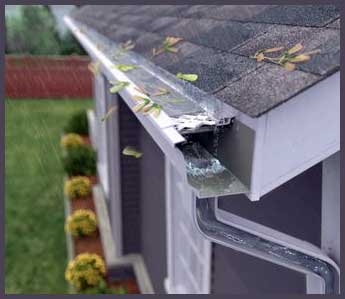
I won’t sugarcoat it—LeafFilter isn’t cheap.
My quote for a 200-foot system came in around $4,500, which is about $22 per linear foot.
Some folks report paying up to $10,000, depending on their home’s size and gutter condition.
Compared to DIY guards, which can cost as little as $0.30 per foot, it’s a big jump.
I negotiated my price down from an initial $6,000, but it still stung. If you’re on a tight budget, this might give you pause, though I’d argue the long-term savings make it worth it.
- Maintenance Isn’t Zero
LeafFilter’s marketing claims you’ll “never clean your gutters again,” but that’s not entirely true. While the gutters themselves stay clear, debris like pine needles or shingle grit can accumulate on top of the mesh.
I’ve had to brush off my guards with a broom from a low ladder once or twice a year. It’s way easier than scooping out gunk, but it’s not maintenance-free. In heavy pollen seasons, I’ve noticed a thin film that needs a quick rinse with a garden hose.
If you expect zero upkeep, you might be disappointed.
- Freezing in Harsh Winters
Living in a cold climate? LeafFilter can struggle in extreme winter conditions. During a brutal ice storm last year, I noticed some ice buildup on the mesh, which caused water to overflow briefly.
Micromesh guards are better than reverse-curve systems at preventing ice dams, but they’re not immune. If you’re in a snowy region, you might need to add heat tape or wider gutters to mitigate this.
It’s not a dealbreaker, but it’s something to consider if you face harsh winters.
- Warranty Fine Print
The lifetime warranty sounds great, but there’s a catch. It covers clogs and material defects, but only if you follow maintenance guidelines—like brushing off debris or cleaning mildew with a bleach solution. If you ignore these steps, you risk voiding the warranty.
Also, it doesn’t cover damage from natural disasters or improper installation. I haven’t had issues, but I’ve heard of customers frustrated by warranty disputes. Read the fine print before you sign, and keep up with basic upkeep to stay covered.
Maintenance Tips To Keep Your LeafFilter Shining
- Regular Inspections Are Key
To keep your LeafFilter performing like a champ, check it a couple of times a year. I usually do this in spring and fall. Grab a ladder (safely!) and look for debris buildup on the mesh. Pine needles, pollen, or shingle grit can accumulate, especially if you have overhanging trees.
A quick visual scan helps you spot any issues before they cause overflow. If you’re not comfortable on a ladder, hire a pro—it’s still cheaper than fixing water damage.
- Brush It Off Gently
When debris collects on the mesh, don’t let it sit. I use a soft-bristle broom to gently sweep off leaves or needles. It takes maybe 10 minutes for my whole house. Avoid harsh tools like metal rakes, which can damage the micromesh.
If you’re dealing with sticky pollen or grit, a light rinse with a garden hose works wonders. Just don’t blast it with a pressure washer—it’s overkill and could harm the frame.
- Watch for Ice in Winter
If you live where it snows, keep an eye on your LeafFilter during winter. Ice can form on the mesh, especially after heavy snow followed by a freeze. I check mine after big storms and use a broom to knock off snow before it hardens.
For extra protection, consider installing heat tape to prevent ice dams. Wider gutters also help, as they handle more water volume. These steps have kept my system running smoothly even in subzero temps.
- Clean Mildew Promptly
In humid climates, mildew or mold can form on the mesh. I noticed a bit of discoloration last summer and tackled it with a mix of one part bleach to three parts water. Spray it on, let it sit for a minute, then rinse with a hose.
This keeps the mesh looking good and prevents slippery buildup. Just wear gloves and be careful not to splash bleach on your siding or plants.
- Check Gutter Alignment
LeafFilter works best when your gutters are properly pitched. After a year, I noticed one section sagging slightly, which caused water to pool. I called LeafFilter’s service team, and they realigned it for free under warranty.
Check your gutters annually for sagging or loose hangers. If you spot issues, don’t ignore them—misaligned gutters can reduce the system’s effectiveness and lead to overflow.
Comparing LeafFilter To Other Gutter Guard Brands
- GutterGlove: A DIY-Friendly Alternative
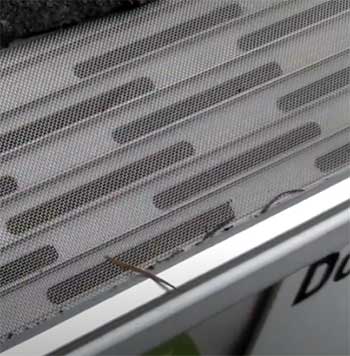
GutterGlove is a big player in the gutter guard world, and I considered it before choosing LeafFilter.
Like LeafFilter, it uses a micromesh screen, but it’s marketed as both a professional and DIY option.
I liked that GutterGlove’s Raptor line is available on Amazon for about $5 per foot—way cheaper than LeafFilter’s professional installation.
However, installing it myself sounded daunting, especially since I’m not handy.
GutterGlove’s mesh is slightly coarser, so it might let in more tiny debris like shingle grit. It’s a solid choice if you’re up for DIY, but I preferred LeafFilter’s pro installation and finer mesh.
- LeafGuard: Seamless but Pricey
LeafGuard’s reverse-curve design is totally different from LeafFilter’s micromesh. It’s a one-piece system where the gutter and guard are combined, using surface tension to channel water while debris falls off.
I was intrigued by its sleek look, but the cost gave me sticker shock—often $30 per foot or more. LeafGuard claims to prevent ice dams better than micromesh, which is a plus in snowy climates.
But its open design can still let in smaller debris, and it requires replacing your entire gutter system. For me, LeafFilter’s compatibility with existing gutters and lower debris intake won out.
- Gutter Helmet: Textured but Tricky
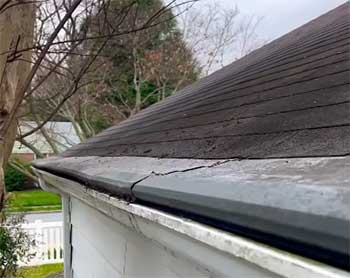
Gutter Helmet, another reverse-curve option, uses a textured surface to guide water into the gutter while shedding debris.
I liked the idea of its durability and lifetime warranty, but I heard mixed reviews about its performance with tiny debris like pine needles.
Installation can also disturb your roof’s shingles, potentially voiding your roof warranty—a risk I wasn’t willing to take.
Gutter Helmet’s pricing is similar to LeafFilter’s, but I found LeafFilter’s micromesh more effective for my tree-heavy yard. If you have fewer small debris issues, Gutter Helmet might be worth a look.
- Amerimax: Budget-Friendly but Basic
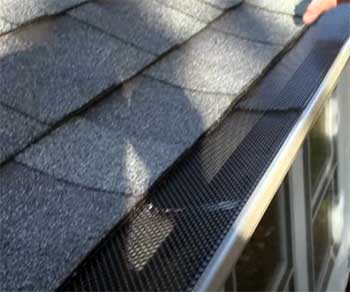
Amerimax offers affordable DIY guards you can find at Home Depot for as little as $0.30 per foot.
I tried their plastic screens years ago, and they were a disaster—clogging quickly and cracking under the sun.
Amerimax’s metal perforated guards are better, but they still let in more debris than LeafFilter’s micromesh.
They’re great if you’re on a tight budget and don’t mind frequent cleaning, but they lack the durability and performance of LeafFilter.
For me, the extra upfront cost of LeafFilter was worth it for the long-term hassle-free experience.
Frequently Asked Questions (FAQ)
LeafFilter isn’t perfect. The biggest downside is the cost—expect $15 to $45 per foot, which can add up to thousands for a typical home. Some debris, like pollen or shingle grit, can still collect on the mesh, requiring occasional brushing or rinsing. In harsh winters, ice can form on the screen, potentially causing overflow. The warranty is generous but requires regular maintenance to stay valid, and some customers report issues with transparency during sales. Installation quality varies, so ensure your crew follows LeafFilter’s specs to avoid wavy or misaligned guards.
In my experience, LeafFilter is excellent. Its micromesh blocks nearly all debris, from leaves to pine needles, keeping my gutters clear for two years. The professional installation and lifetime warranty add peace of mind, and it’s reduced my home maintenance significantly. It’s not flawless—cost and occasional upkeep are factors—but it’s one of the best gutter guards I’ve tried. If you’re tired of cleaning gutters and want a reliable solution, LeafFilter delivers, especially for homes with heavy tree cover.
There’s been chatter about a class-action lawsuit against LeafFilter, primarily tied to warranty and marketing claims. Some customers allege the company wasn’t fully transparent about maintenance needs, like brushing debris off the mesh, or that the “no-clog” promise was misleading since tiny debris can still accumulate. Others claim high-pressure sales tactics or inflated initial quotes. I haven’t faced these issues myself, but it’s worth researching the lawsuit details and asking pointed questions during your consultation to ensure you’re clear on what you’re getting.
LeafFilter’s cost varies based on your home’s size, gutter condition, and location. My 200-foot system cost about $4,500, or $22 per foot, after negotiation. Prices typically range from $15 to $45 per foot, so a standard home with 150–200 feet of gutters could run $2,250 to $9,000. Some report quotes as high as $10,000, especially if repairs are needed. Always negotiate—my initial quote was $6,000, but I got it down by being firm. Get a free estimate to know exactly what you’ll pay.
Why LeafFilter Is Worth Every Penny?
After two years with LeafFilter, I can say it’s transformed how I maintain my home. No more risky ladder climbs, no more overflowing gutters wrecking my siding. The micromesh system, pro installation, and solid warranty make it a standout, despite the cost.
Whether you’re dodging pine needles or protecting your foundation, LeafFilter delivers. If you’re ready to say goodbye to gutter woes, get a quote and see the difference for yourself.
Your home—and your sanity—will thank you.
